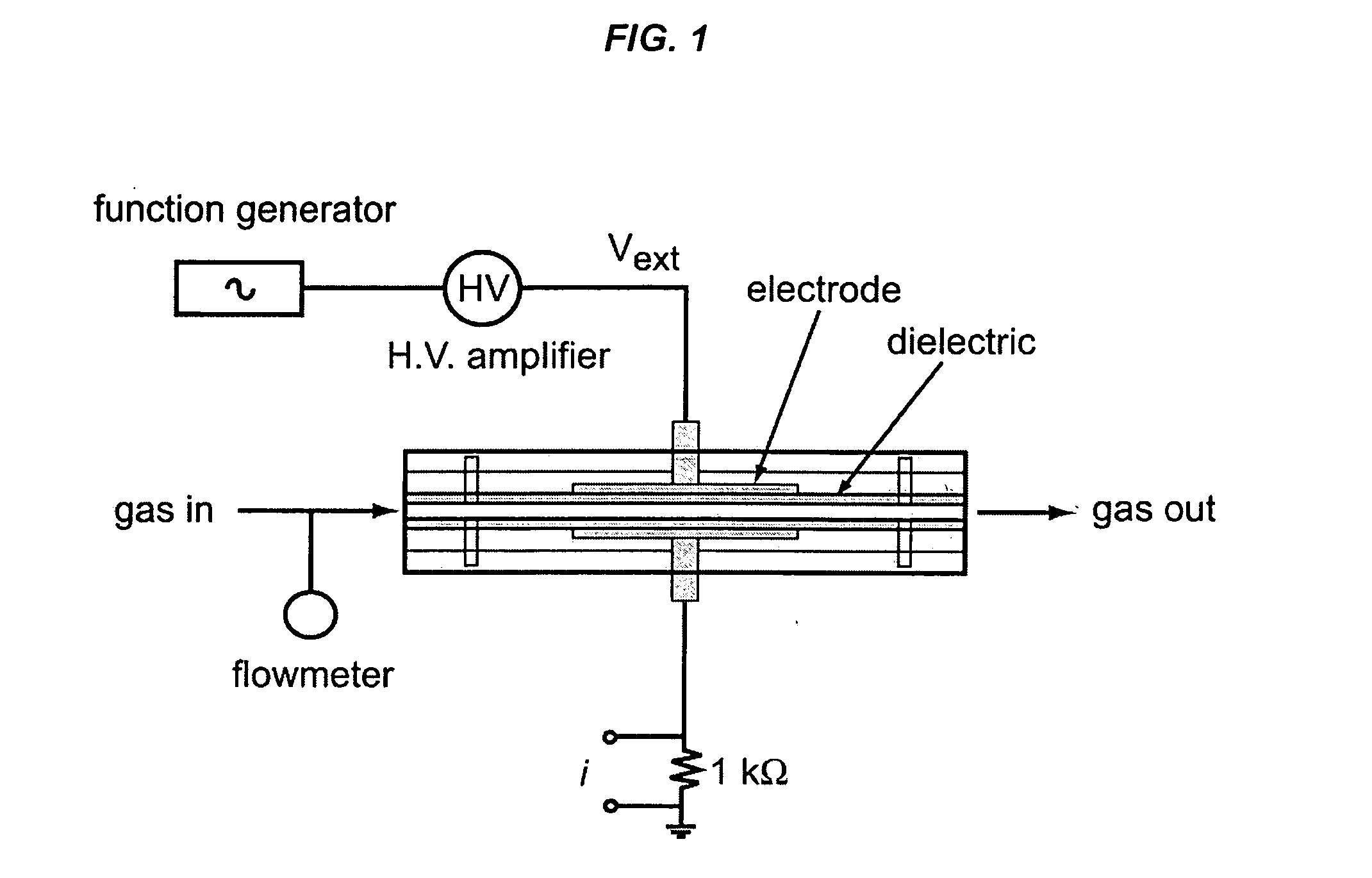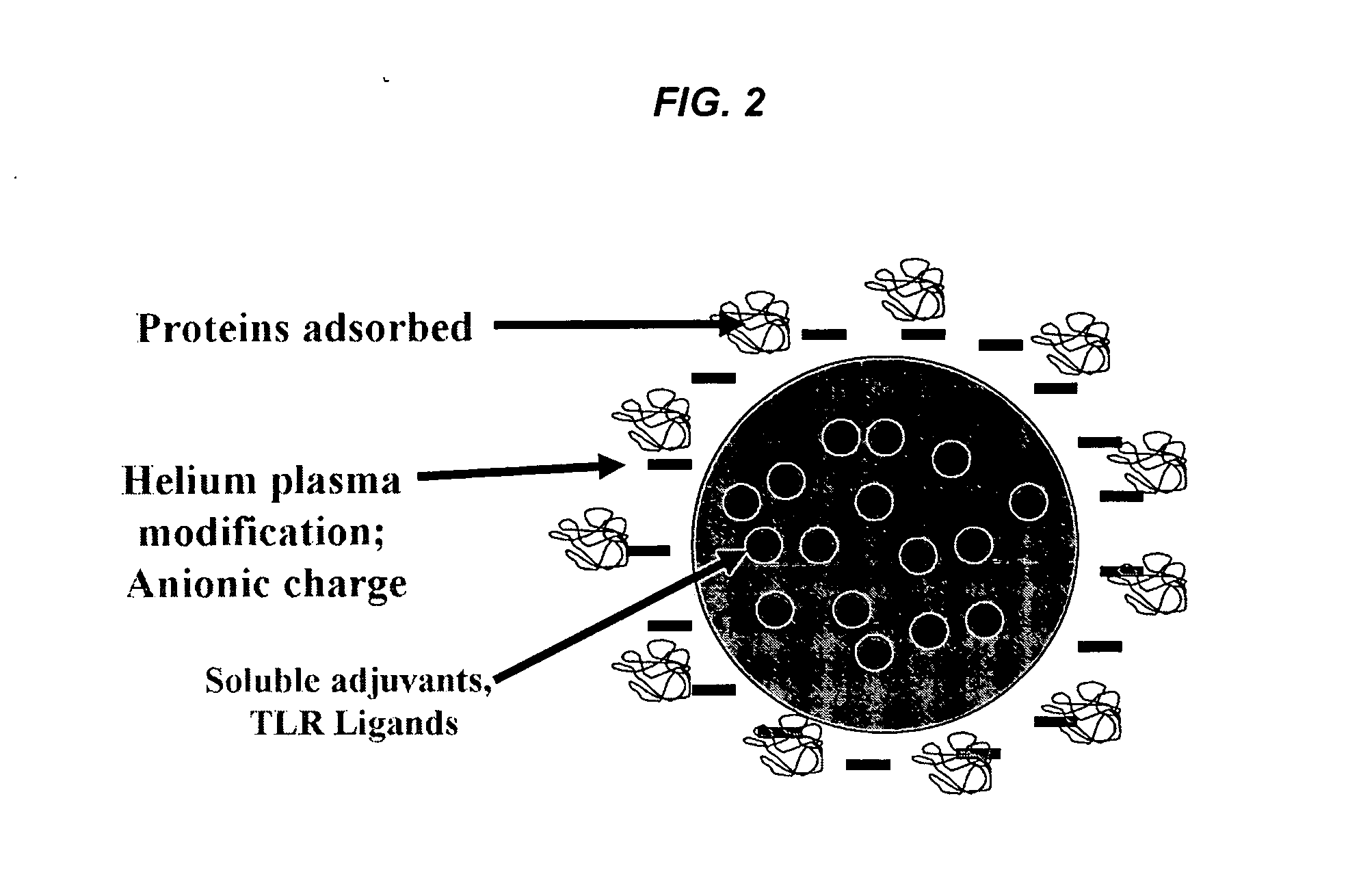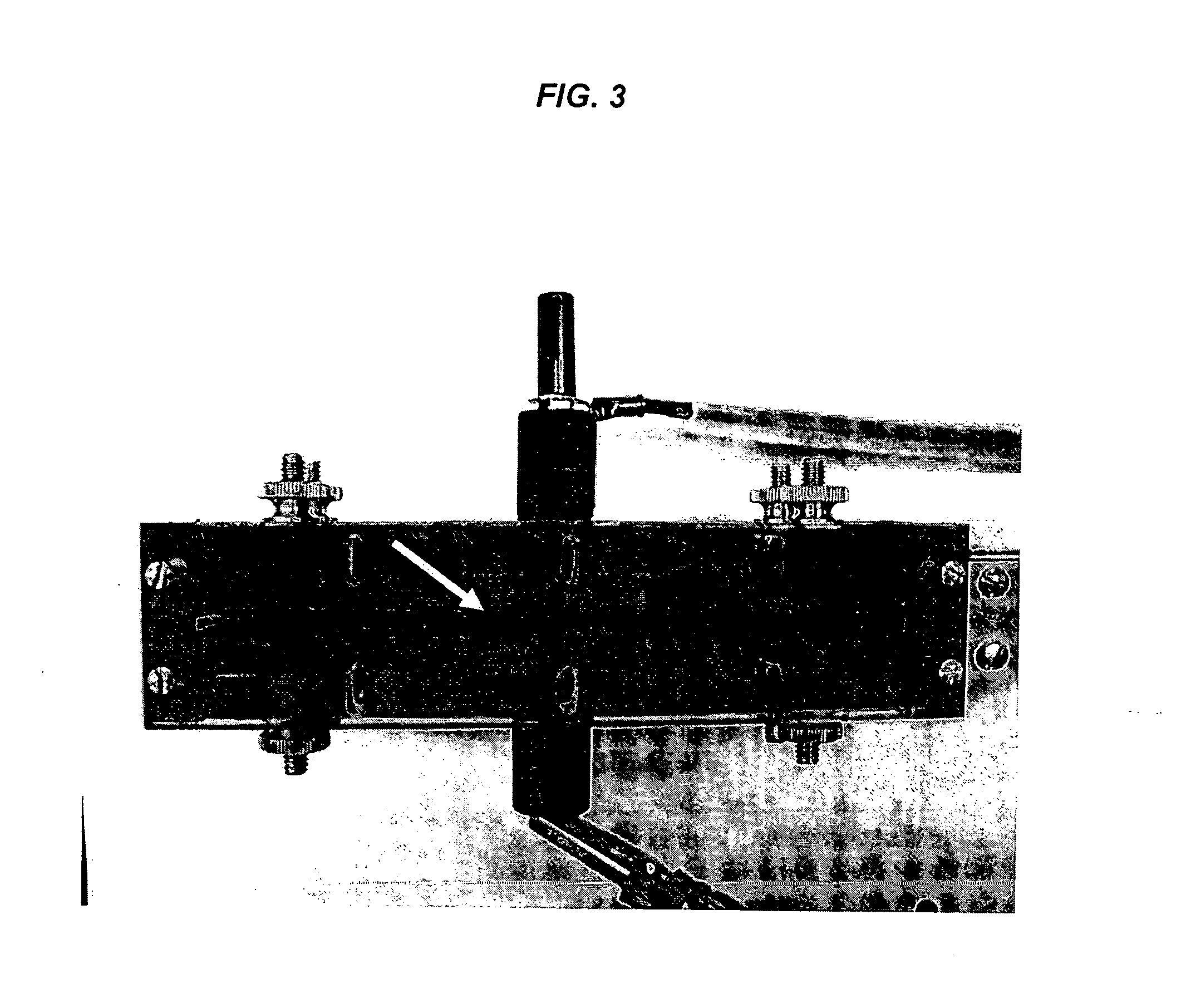Surface functionalization of polymeric materials
a polymer material and functionalization technology, applied in the direction of synthetic polymer active ingredients, organic active ingredients, pharmaceutical delivery mechanisms, etc., can solve the problems of poor reproducibility, inefficiency, and high processing cost, and the current surface modification chemicals, e.g. cationic surfactants, are often toxic, and achieve low ion impact energy, reduce structural damage to the surface of the material, and ensure the effect of drug delivery
- Summary
- Abstract
- Description
- Claims
- Application Information
AI Technical Summary
Benefits of technology
Problems solved by technology
Method used
Image
Examples
example 1
Generation of An APG Plasma Discharge
Materials. Polymers And Reagents
[0060] PLGA Resomer® RG502H, RG503H was purchased from Boehringer Ingelheim, Germany (inherent viscosity (I.V.)=0.16-0.2 dl / g, MW, approximately 11,000 Da, obtained from the inherent viscosity vs. molecular weight correlation sheet)). Poly (vinyl alcohol) PVA, MW approximately 31,000 Da (approximately 88% hydrolyzed) was purchased from Fluka. Ovalbumin and Lysozyme proteins were purchased from Sigma-Aldrich (St. Louis, Mo.). Micro BCA kit for protein analysis was purchased from Pierce Biotechnology (Rockford, Ill.). All other lab supplies were procured from Fischer Scientific Inc (Pennsylvania, USA).
[0061] An APG plasma discharge was generated by a DB-APG in pure helium flowing gas. FIG. 1 depicts the experimental set up. Two parallel electrodes within a few millimeters of each other were supplied by a high-voltage (approximately 1 kV) power supply at high audio (˜10 kHz) frequency. Both e...
example 2
Surface Functionalization of Microparticles
Synthesis of Double Emulsion Particles
[0065] As a specific example embodiment, PLGA microparticles were synthesized using the double emulsion, solvent evaporation process described by Kasturi et al. (Mol. Ther., 2003, 7, S224). Three hundred fifty milligrams of PLGA microparticles, both without and with carboxylic acid (RG502 or RG502H, Boehringer Ingelheim, Virginia, Mw approximately 12,000 Da) end cap, were dissolved in 7 ml of methylene chloride (EMD Chemicals, New Jersey) to yield a 5% (weight / volume) polymer solution. Deionized water (300 μl) was added to the polymer solution to form a primary emulsion, which was then homogenized at 10,000 rpm for 2 min using a Silverson SL2T bench top homogenizer. The primary emulsion was then added to 50 ml of 1% PVA solution and homogenized for 1 min to obtain a w / o / w emulsion followed by solvent evaporation with magnetic stirring for 3 hours, to achieve microparticle formation and hardening. The...
example 3
Loading the Functionalized Particles With Bio-Active Substances
Protein Loading And Quantitation On Plasma-Modified PLGA Particles
[0075] Lyophilized plasma modified PLGA microparticles were used for adsorption of lysozyme protein. Lysozyme has been used as a model protein for adsorption experiments as reported by Singh et al., 2006, supra. Lysozyme protein was loaded at 1% (wt / wt) to the mass of the PLGA formulation used. Unmodified PLGA microparticles were used as controls for the loading experiment. Lysozyme (50 μg) from a stock lysozyme solution in pH 7.0 HEPES buffer (5 mg / ml) was added to 5 mg of unmodified and plasma modified PLGA microparticles suspension in pH 7.0 HEPES buffer under mild vortexing. The total volume for the protein adsorption process was 1 ml in a 1.5-ml microcentrifuge tube.
[0076] The protein / microparticle mixture was rotated on an end-to-end shaker (Barnstead International, Dubuque, Iowa) for 12 hr overnight at 4° C. Following protein adsorption, the mic...
PUM
| Property | Measurement | Unit |
|---|---|---|
| pressures | aaaaa | aaaaa |
| ion energy | aaaaa | aaaaa |
| voltage | aaaaa | aaaaa |
Abstract
Description
Claims
Application Information
 Login to View More
Login to View More - R&D
- Intellectual Property
- Life Sciences
- Materials
- Tech Scout
- Unparalleled Data Quality
- Higher Quality Content
- 60% Fewer Hallucinations
Browse by: Latest US Patents, China's latest patents, Technical Efficacy Thesaurus, Application Domain, Technology Topic, Popular Technical Reports.
© 2025 PatSnap. All rights reserved.Legal|Privacy policy|Modern Slavery Act Transparency Statement|Sitemap|About US| Contact US: help@patsnap.com



